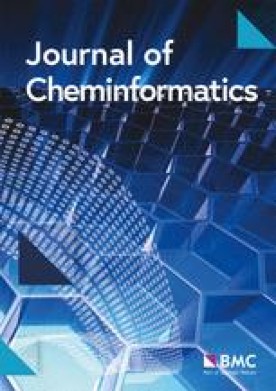Milestones in cheminformatics
IF 5.7
2区 化学
Q1 CHEMISTRY, MULTIDISCIPLINARY
引用次数: 0
化学信息学的里程碑
化学信息学领域自成立以来经历了重大转变,从一个小众学科发展成为现代药物化学、药物研究和其他几个化学领域的基石[1,2,3]。为了庆祝《化学信息学杂志》创刊15周年,我们特别推出了化学信息学里程碑系列,https://www.biomedcentral.com/collections/MICHE,展示了化学信息学如何发展成为支撑化学研究、创新和应用的关键学科。该系列旨在不仅作为一个回顾的观点,而且作为一个平台,设想化学信息学的未来方向。本期特刊汇集了著名学者和实践者的观点,他们强调了化学信息学各个领域的变革发展。Bajorath提供了一个关于该领域发展轨迹的全球视角,为未来的整合和发展奠定了基础。威利特回顾了化学数据库搜索的早期工作。Reymond强调了化学空间作为一个统一主题的概念和实践意义,提供了对其在可视化多样性和指导发现方面的作用的见解。Tropsha及其同事对目前评估QSAR模型准确性的范式进行了批判性分析,提出了更细致和任务特定的验证策略。斯坦贝克追溯了从封闭系统到协作创新的历程,而威廉姆斯和理查德则提出了确保化学数据库的公共访问和数据完整性的三大支柱。Bienstock讨论了AI/ML方法在设计新化学实体方面的影响和潜力,强调了它们在预测建模和虚拟筛选方面日益增长的作用。Varnek等人通过探索高等教育的成就和挑战,强调了结构化化学信息学课程和跨学科能力的必要性,而不是作为结尾部分,触及了未来的一个重要方面。在这个集合的贡献说明了化学信息学的多维特征-从它的计算和理论基础到它的教育,伦理和基础设施的组成部分。该收集突出了已取得的进展和仍然存在的挑战,例如协调数据标准,确保可重复性,促进对工具和知识的包容性获取[3],同时还与生物信息学、材料科学和系统生物学等学科交叉[3]。透明度、协作和跨学科互动将成为该领域未来发展的关键驱动力。可解释的人工智能和可持续数据实践的兴起可能会定义化学信息学的下一个时代。化学信息学领域已经被许多科学家塑造了起来——那些为这个特别的收藏做出贡献的人,那些当时无法这样做的人,还有那些其遗产和思想继续在文学中生存的人。我们正在庆祝《化学信息学杂志》创刊15周年这一事实充分说明了化学信息学社区的承诺和愿景。这个特别的集合,化学信息学的里程碑,期望在未来的岁月里告知和激励它的读者,同时也向更广泛的社区致敬,他们的持续贡献塑造了这个领域。数据可用性声明不适用。这是一篇编辑稿件。[J](2014)化学信息学的发展历程。Mol Inf 43:e202400036。https://doi.org/10.1002/minf.202400036Article CAS谷歌学者Oprea TI, Weininger D(2024)再思考化学信息学时代的药物化学。中华医学杂志67:17935-17939。https://doi.org/10.1021/acs.jmedchem.4c02179Article CAS PubMed谷歌学者Martinez-Mayorga K, rosas - jimmednez JG, Gonzalez-Ponce K, López-López E, Neme A, Medina-Franco JL(2024)追求小分子生物活性的准确预测模型。化学15:38 - 1952。https://doi.org/10.1039/D3SC05534EArticle CAS PubMed PubMed Central谷歌Scholar López-López E, Bajorath J, Medina-Franco JL(2021)化学、生物学和生物医学科学信息学。中国生物医学工程学报(英文版)61(1):26 - 35。https://doi.org/10.1021/acs.jcim.0c01301Article CAS PubMed谷歌学者下载参考我们感谢所有为这个集合做出贡献的作者和UNAM的资助。我们也感谢审稿人对论文的反馈和《化学信息学杂志》编辑团队的支持。墨西哥国立自治大学梅里达校区化学研究所,梅里达-特提兹高速公路,4.5公里,尤卡坦州,乌库,97357,卡琳娜·马丁内斯-马约尔加迪法奎姆研究小组,墨西哥国立大学化学系药学系,墨西哥国立大学Autónoma梅里达大学3000大道,墨西哥城,04510,墨西哥jossol。 Medina-FrancoAuthorsKarina Martinez-MayorgaView作者出版物搜索作者:PubMed谷歌scholarjossl . Medina-FrancoView作者出版物搜索作者:PubMed谷歌scholarcontributions两位作者对撰写手稿的贡献相同。通讯作者:Karina Martinez-Mayorga或josore L. Medina-Franco。利益竞争作者声明他们没有利益冲突。出版商声明:对于已出版的地图和机构关系中的管辖权要求,普林格·自然保持中立。开放获取本文遵循知识共享署名-非商业-非衍生品4.0国际许可协议,该协议允许以任何媒介或格式进行非商业用途、共享、分发和复制,只要您适当注明原作者和来源,提供知识共享许可协议的链接,并注明您是否修改了许可材料。根据本许可协议,您无权分享源自本文或其部分内容的改编材料。本文中的图像或其他第三方材料包含在文章的知识共享许可协议中,除非在材料的署名中另有说明。如果材料未包含在文章的知识共享许可中,并且您的预期用途不被法律法规允许或超过允许的用途,您将需要直接获得版权所有者的许可。要查看该许可的副本,请访问http://creativecommons.org/licenses/by-nc-nd/4.0/.Reprints和permissionsCite这篇文章martinez - mayorga, K., Medina-Franco, J.L.化学信息学的里程碑。化学通报,17(4)(2015)。https://doi.org/10.1186/s13321-025-01054-9Download citationpublication: 14 July 2025DOI: https://doi.org/10.1186/s13321-025-01054-9Share这篇文章任何你分享以下链接的人都可以阅读到这篇文章:获取可共享链接对不起,这篇文章目前没有可共享的链接。复制到剪贴板由施普林格自然共享内容倡议提供
本文章由计算机程序翻译,如有差异,请以英文原文为准。
求助全文
约1分钟内获得全文
求助全文
来源期刊

Journal of Cheminformatics
CHEMISTRY, MULTIDISCIPLINARY-COMPUTER SCIENCE, INFORMATION SYSTEMS
CiteScore
14.10
自引率
7.00%
发文量
82
审稿时长
3 months
期刊介绍:
Journal of Cheminformatics is an open access journal publishing original peer-reviewed research in all aspects of cheminformatics and molecular modelling.
Coverage includes, but is not limited to:
chemical information systems, software and databases, and molecular modelling,
chemical structure representations and their use in structure, substructure, and similarity searching of chemical substance and chemical reaction databases,
computer and molecular graphics, computer-aided molecular design, expert systems, QSAR, and data mining techniques.
 求助内容:
求助内容: 应助结果提醒方式:
应助结果提醒方式:


